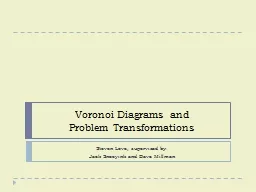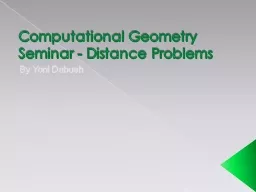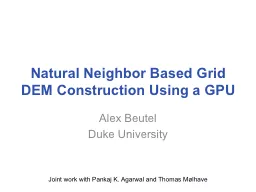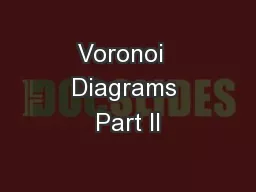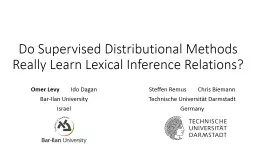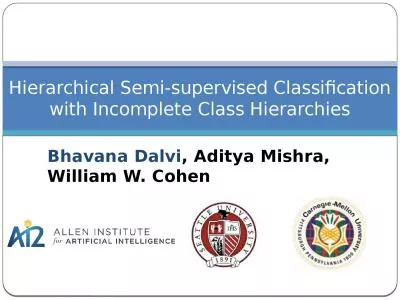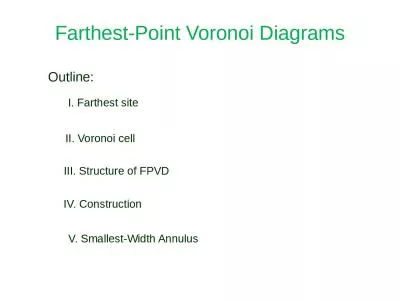PPT-Voronoi Diagrams and Problem Transformations Steven Love, supervised by:
Author : yoshiko-marsland | Published Date : 2019-11-06
Voronoi Diagrams and Problem Transformations Steven Love supervised by Jack Snoeyink and Dave Millman What is a Voronoi Diagram A spatial decomposition A set of
Presentation Embed Code
Download Presentation
Download Presentation The PPT/PDF document "Voronoi Diagrams and Problem Transformat..." is the property of its rightful owner. Permission is granted to download and print the materials on this website for personal, non-commercial use only, and to display it on your personal computer provided you do not modify the materials and that you retain all copyright notices contained in the materials. By downloading content from our website, you accept the terms of this agreement.
Voronoi Diagrams and Problem Transformations Steven Love, supervised by:: Transcript
Download Rules Of Document
"Voronoi Diagrams and Problem Transformations Steven Love, supervised by:"The content belongs to its owner. You may download and print it for personal use, without modification, and keep all copyright notices. By downloading, you agree to these terms.
Related Documents

